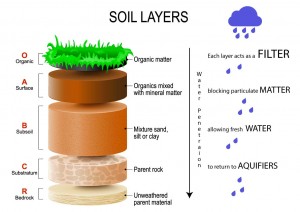Soil Information
Here are 3 important and interesting facts about soil:
1: Soil is the foundation of basic ecosystem function. It filters water, provides essential nutrients to crops and helps regulate some of the greenhouse gasses. It is where it all starts...
2: Soil provides a habitat for many different organisms, which helps with biodiversity which in turn helps your plants grow. Soil also processes materials such as carbon so that living things can use them multiple times. It is the ultimate recycler..

3: Soil provides a sturdy base on which humans can build and develop things such as roads and dams, and provides the basic building materials, such as clay, with which we are able build bricks and other structures. Soil also supplies things which humans use to make many different antibiotics.
 |
| Daniel Neuhoff working with composting. |
references:
Soil Science Society of America
https://soils.org/files/science-policy/sssa-marketing-2013.pdf
Denbow wesite for image 2
https://www.denbow.com/soil-stormwater-management-tool/soil-as-a-water-filter/
Soil composition Practical 1
We discovered that...
Our soil has a high sand content with little bits of loam and clay in it.
Our Results were:
Sand layer thickness = 2cm
Clay layer thickness = 0,4cm
Silt layer thickness = 0,2cm
Other = 0,2cm
 |
| Soil practical-After |
Our soil has a high sand content with little bits of loam and clay in it.
Air in soil is important as the organisms that break down organic matter need oxygen, from the air, in order to live. Humus is also important as it provides a lot of nutrients for the the plants which helps them to grow better.
Our window garden will need a lot of air and humus for our plants to be able to thrive and grow efficiently. We need enough oxygen and nutrients to grow the tomatoes, basil and celery in our planter boxes. We have lots of air, as the soil is sandy, but we are probably short on nutrients as there is only a little humus.
Soil texture practical 2
The description of our soil texture is as follows:
Soil 1 had a very sandy texture. It was very gritty and contained lots of organic material.
Soil 2 had a mushy texture and contained a lot of organic matter as well.
We would classify our soil as follows:
Sample 1: sandy loam
Sample 2: loam
There is a relationship between soil texture and water retention:
The sandy soil doesn't retain water as well as the more loamy textured soil, which retains water much better.
This means that we ideally should use soil with variety and which has a combination of various types of soil, so that we can retain an ideal amount of water. Our soil may be a little too sandy for the ideal water retention, and we will have to watch that we water our garden enough.
Water Retention Practical 3
Results:
Soil 1 mass was 100 grams, 69 ml of water drained into beaker, 31 ml water retained by soil
Soil 2, mass was 100 grams, 64 ml of water drained into beaker, 36ml water retained by soil
Sample 2 retained(36 ml of water) and Sample 1 retained less water ( 31ml), so sample 2 retained 5 ml more than sample 1.
Soil 1 is more sandy soil that allows water to flow through larger gaps in the sand, compared to loamy soil which is more dense, making it harder for the water to pass through.
High water retention is good for plants because it holds the water and you don't have to water the plants as frequently. This is especially true in a drought where water is scarce.
High organic matter soil, like in sample 2 ( loamy) has a higher water retention, which is better for plants.
Knowing the water content of the soil helps to know how frequently we need to water the plants, in order to keep them healthy.
Soil types can be identified by the results of this experiment,as
we can see that the sandy soil has less retention of water than the more loamy soil and clay soils, which have higher water retention.
To summarize the soil practical results as they relate to our window garden:
Our Window garden has tomatoes, basil and celery. Our soil we tested was suitable, although maybe a little sandy. This will help give the air needed for oxygen for the plants, but it may mean we need to water the garden more often. It has good nutrient content which is great especially for the tomatoes and celery. The soil is a good enough texture, and has enough water retention, that hopefully all the plants will grow, and we will not need to use too much water. We will have to keep an eye on the water retention, and water more if necessary.
Soil practical individual reflection:
James Flint:
I think we
worked quickly and effectively together except for our miss calculation on the
amount of water which caused the experiment to spill. We always finished our
practices on time and contributed equally, overall it was a success.
Daniel Neuhoff:
I believe our soil practical was a success in the end. At the start we did accidentally allow water to spill but that was our only setback. We worked well as a group and cooperated and all did our part in the practical.
Sebastiano Panieri:
I think that overall we worked well as a group together. We at times could be a little careless but we got the job done properly. We all did even amounts in each practical and got along well with each other and were never frustrated or irritated with each other which is a good thing.


No comments:
Post a Comment
Note: Only a member of this blog may post a comment.